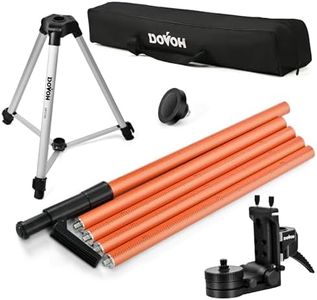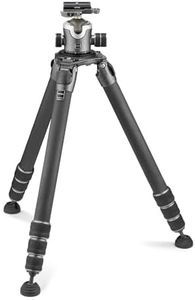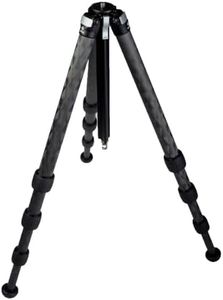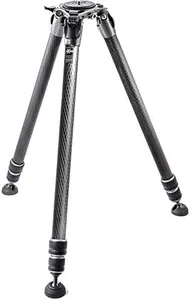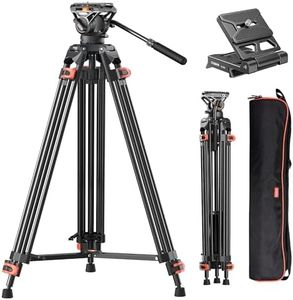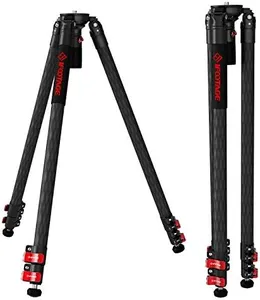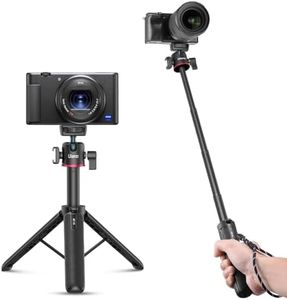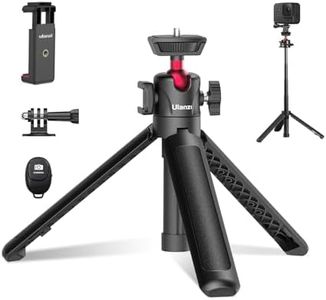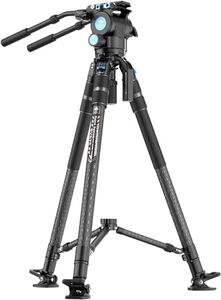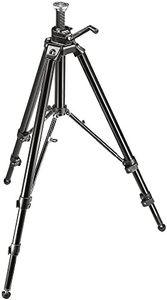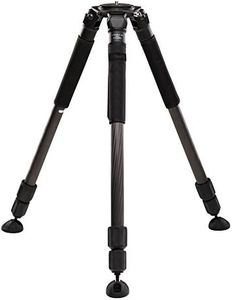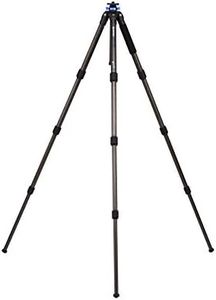10 Best Heavy Duty Tripods 2025 in the United States
Our technology thoroughly searches through the online shopping world, reviewing hundreds of sites. We then process and analyze this information, updating in real-time to bring you the latest top-rated products. This way, you always get the best and most current options available.

Our Top Picks
Winner
Gitzo Systematic Tripod, Series 5, with Center Ball Head, Series 4, 30kg Payload
Most important from
2 reviews
The Gitzo Systematic Tripod, Series 5, is designed for professionals needing a very sturdy and reliable support for heavy camera setups, especially long lenses from 400-600mm. It has an impressive load capacity of 30kg (66 lbs), making it suitable for large DSLR or mirrorless cameras with heavy lenses, which is ideal for wildlife and bird photography where stability is crucial. Its carbon fiber construction keeps the tripod lightweight (about 10.8 pounds) yet extremely rigid, helping reduce vibrations and improve shot sharpness.
The tripod has four leg sections, allowing it to fold compactly while still reaching a maximum height of 148 cm, which is a good balance for field use. It features a ball head with a patented zero-drift locking system, providing smooth and secure camera positioning, along with fine friction control for precise adjustments. The modular accessory system adds versatility, letting users customize the setup for different shooting conditions.
While the weight is light for its category, it might still be on the heavier side for casual users seeking ultra-portability. Additionally, its premium build and features come with a higher price tag, which may not suit hobbyists or those with lighter equipment. This tripod demonstrates strength, stability, and smooth operation, making it an excellent choice for serious photographers who require dependable support for heavy camera gear in outdoor environments.
Most important from
2 reviews
Really Right Stuff Ascend-14 4-Section Compact Travel Carbon Fiber Tripod
The Really Right Stuff Ascend-14 is a solid choice if you want a heavy-duty tripod that balances strength with portability. Made from premium carbon fiber, it’s strong yet lightweight, supporting up to 30 pounds—enough for most professional camera setups. Its max height of nearly 69 inches gives you good flexibility for different shooting angles, while the four leg sections with twist-locks make setup quick and allow the legs to spread independently. This means you can easily stabilize the tripod on uneven ground.
The included ball head offers smooth 360-degree panning, which is great for precise framing. A removable center column with a ballast hook adds versatility and extra stability in windy or challenging environments. One minor point is the folded size; while compact at 18.5 inches, the diameter is a bit thicker, which might take up more space in smaller bags. Also, the twist-lock legs are generally reliable but can be slightly slower to adjust compared to flip locks.
If you often travel and need a tripod that can handle heavy gear without being bulky, this model fits well. It is especially suited for photographers who want a dependable, durable tripod that performs well outdoors and supports a range of camera equipment without compromise.
DEWALT Tripod Stand, Heavy Duty, Construction Tripod, Built-In Strap for Easy Transport on Jobsites (DW0737)
Most important from
1764 reviews
The DEWALT DW0737 tripod is designed for heavy-duty use, particularly on construction sites, and brings several practical features to the table. Its build combines aluminum and alloy steel, offering a solid balance between strength and lightweight portability at just 8.3 pounds. The tripod stands up to 60 inches high, which is suitable for most laser level and surveying tasks, while folding down to 38 inches for easier transport.
The quick-release legs allow fast setup and adjustment, a plus when working under time pressure. The pointed steel feet ensure good stability on uneven terrain, which is essential for outdoor job sites. A built-in strap adds convenience for carrying around. The tripod uses industry-standard 5/8-inch x 11 mounting threads and a flat head, making it compatible with many laser levels and tools. It has five-star customer reviews, reflecting user satisfaction.
This tripod is a dependable choice for construction professionals who need a portable, sturdy stand, though it has only three leg sections which might limit height flexibility compared to some models with more sections.
